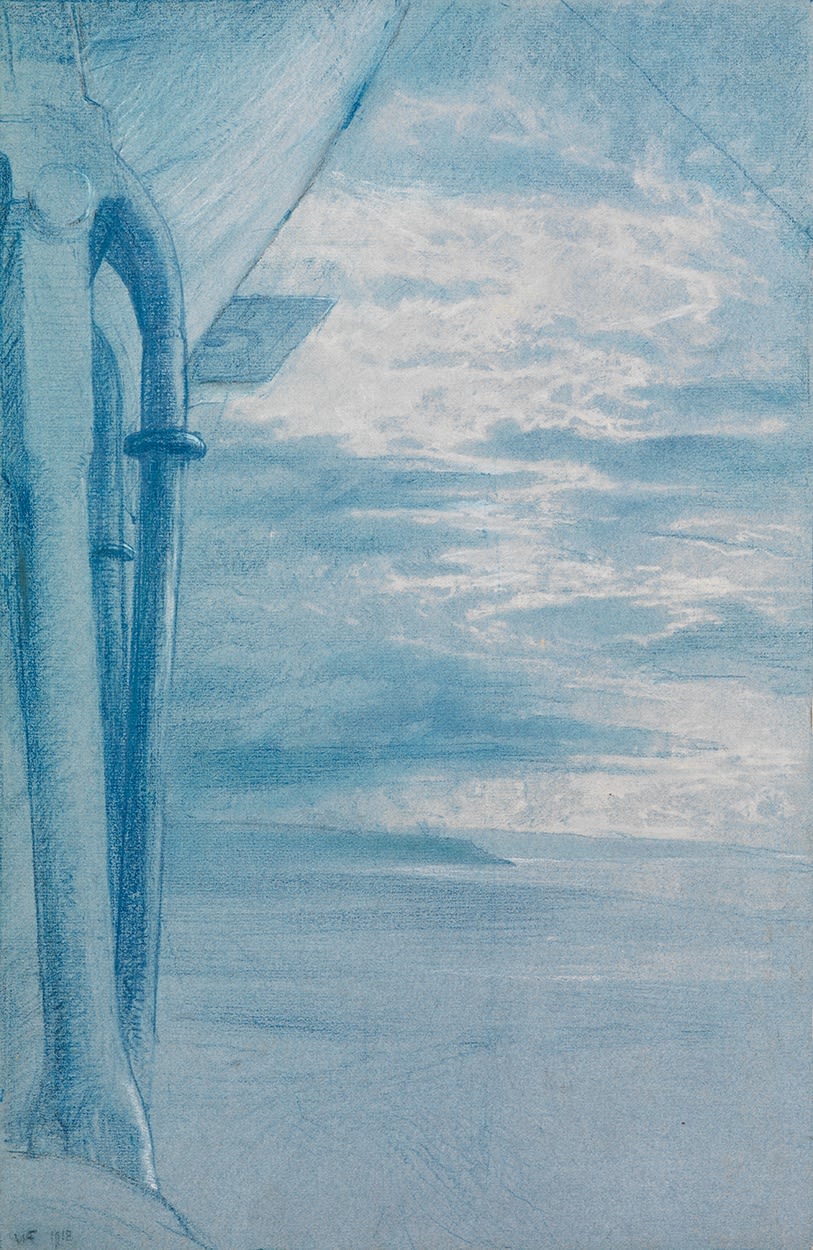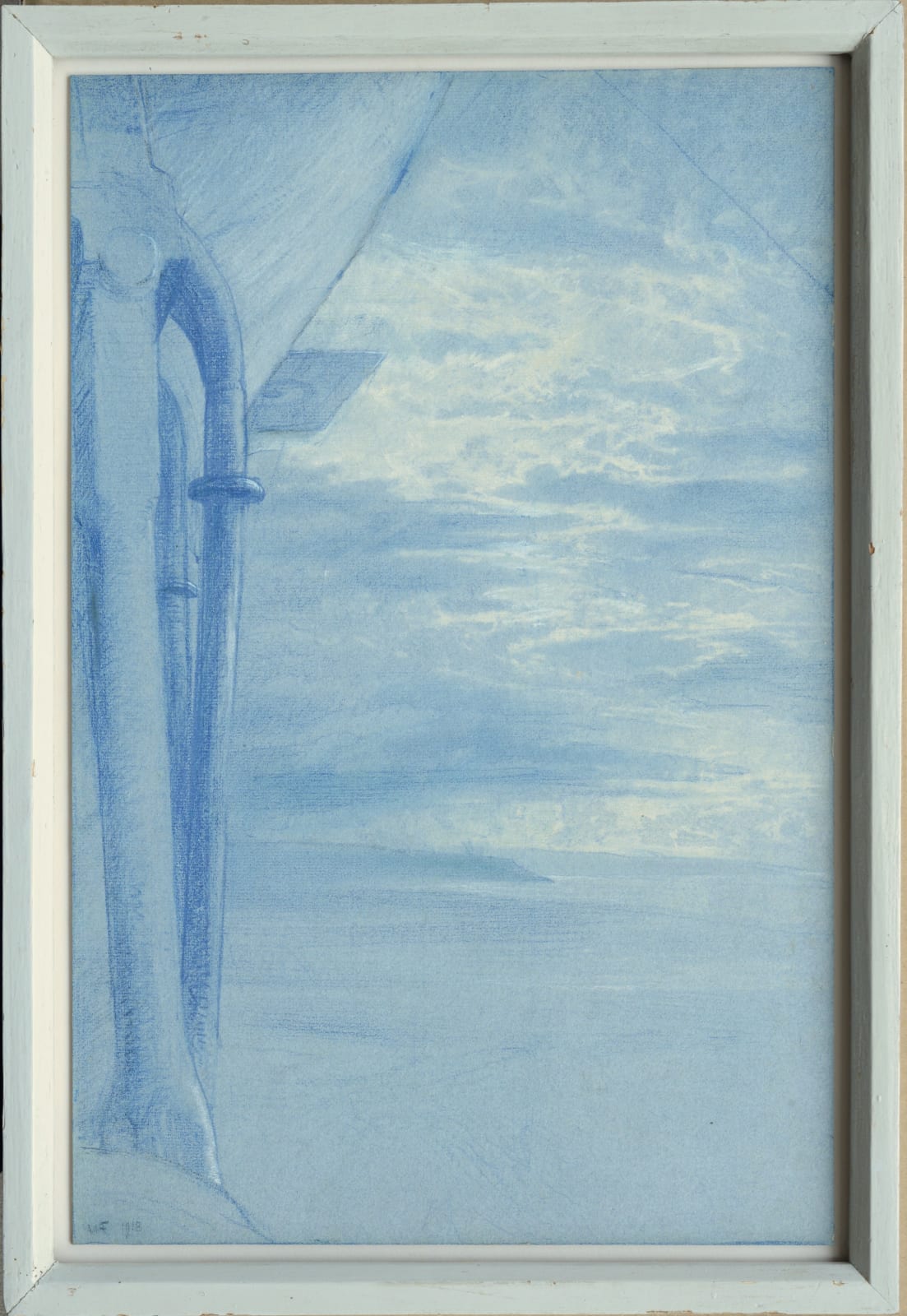William Arnold-Forster (1886-1951)
Submarine Patrol, from an Airship
Pastel; monogrammed and dated 1918, inscribed by the artist on the back 'Drawn from an airship (‘blimp’) off the Ulster coast in July 1918, watching for German submarines'
18 ½ x 21 ¼ inches
£1,400
%3Cdiv%20class%3D%22artist%22%3EWilliam%20Arnold-Forster%20%281886-1951%29%3C/div%3E%3Cdiv%20class%3D%22title_and_year%22%3E%3Cspan%20class%3D%22title_and_year_title%22%3ESubmarine%20Patrol%2C%20from%20an%20Airship%3C/span%3E%3C/div%3E%3Cdiv%20class%3D%22medium%22%3EPastel%3B%20monogrammed%20and%20dated%201918%2C%20inscribed%20by%20the%20artist%20on%20the%20back%20%27Drawn%20from%20an%20airship%20%28%E2%80%98blimp%E2%80%99%29%20off%20the%20Ulster%20coast%20in%20July%201918%2C%20watching%20for%20German%20submarines%27%3C/div%3E%3Cdiv%20class%3D%22dimensions%22%3E18%20%C2%BD%20x%2021%20%C2%BC%20inches%3C/div%3E
Arnold-Forster studied at the Slade 1905-8, and during the Great War he became a Lieutenant Commander in the RNVR, planning the naval blockade of Germany. In July 1918 he drew this impression from an airship. Tethered airships were particularly effective at spotting, and deterring, German submarines. At the beginning of the War the Navy had seven airships and by the end they had over 200. Crews, often blue with cold in their open gondolas, could stay aloft almost indefinitely, and see to the furthest horizon, far in excess of anything possible by a surface reconnaissance craft or an ordinary aeroplane.
49
of
49
Related artworks




